All the supermarkets agree. Social media matters. But, as a new study for The Grocer reveals, the effectiveness of retailer strategies varies wildly, with a surprising number of major players hugely underperforming
Where has all the Tesco Value Curry Sauce gone? The question Zetta Robinson posted on Tesco’s Facebook page last week sounded like a pretty trivial query. Tesco treated it as such, responding that the sauce had been discontinued and that there were no plans to bring it back. But six minutes later, it had lost a customer. “Well, that’s another reason to go into the store lost,” retorted the disgruntled curry sauce fan. “I can get other curry sauces anywhere so I don’t need to bother with Tesco!”
Welcome to the new frontline of retail. Robinson’s reaction illustrates perfectly what a social minefield social media has become for even the most responsive and engaged retailers (and the Tesco customer care team had been friendly enough even if they hadn’t offered an explanation or suggested an alternative). It’s a minefield they’ll have to learn to navigate, however, because social media is where the battle for shoppers’ hearts, minds and wallets are increasingly being won - and lost, in Robinson’s case.
And they’ll need to do far more than than just ramp up the number of followers and respond to their queries quickly, according to a new study carried out exclusively for The Grocer by social media consultancy Sociagility.
Sociagility measured the effectiveness of Britain’s 10 biggest grocery retailers’ social media strategies by assessing their websites as well as their Facebook, Twitter, YouTube sites and analysing five core attributes: popularity (followers, site traffic, etc) receptiveness interaction network reach (how a retailer’s content spreads virally across the web through retweets, blogs, etc) and the trust (or otherwise) shown in posts about the brands online.
The findings jettison any assumptions that there’s an automatic correlation between the the number of followers a retailer has and its social effectiveness - or that online retailers are inevitably going to be more adept at social media.
Since setting up its official Facebook page last March, Tesco has prompted about 629,000 ‘likes’, giving it the biggest following on Facebook out of its peers (Sainsbury’s has about 380,000 ‘likes’ Asda about 155,000 Morrisons just 14,000). Between them the big four also have well over 100,000 followers on Twitter.
Yet Tesco only made it to number three in the Sociagility Index (trailing second-placed Sainsbury’s by a country mile) and Ocado - Britain’s sole online-only supermarket - is languishing in seventh.
Meanwhile, M&S came top, with the highest level of interaction, trust and network reach (indicating that the content the retailer is posting online is generating genuine interest and travelling virally).
“This shows that in social media, size isn’t everything - as a brand it’s what you do with it that really matters,” says Tony Burgess-Webb, co-founder of Sociagility. “There’s absolutely no point in having masses of fans if you don’t engage with them. There’s a consumer demand for engagement online and the impact of getting engagement right or wrong is exponential.”
As closer inspection of the supermarkets’ activity on Facebook shows. Despite having a similar number of ‘likes’ on their official Facebook pages, there is a huge gulf between M&S’s and Tesco’s scores for Facebook - 273.7 points and 185.5 respectively.Although Tesco is second in terms of its performance on Facebook, it is closer to third and fourth-placed Sainsbury’s and Asda, which have roughly half and a third the number again of ‘likes’ respectively. But for the latter it’s more about quality not quantity.
How engaged is the fan base?
“We’re in no rush to chase after ‘followers’ or ‘likes’,” says Dom Burch, head of social media at Asda, which launched its Facebook page last April. “I’d rather have 150,000 of the most engaged fans in retail than 600,000 who aren’t that bothered. A lot of companies think that if they have lots of friends on Facebook they’ll be able to sell them lots of stuff but life’s more complicated than that.
“The main measure is how engaged our fan base is. You take the number of likes and shares divided by the number of posts divided by the number of fans. That’s a pretty good indication of how engaged people are.”
For Asda, social media gives it a chance to listen to what their customers really think. “Reputation is really what people say about you when you’ve left the room rather than what they say to your face,” says Burch, adding that social media provides Asda with an effective customer service and reputation management tool.
The latter is particularly important given the nature of the internet. “A bad news story can spread like wildfire across the web,” says Sam Curtis, a director at market research company TNS. “If brands aren’t present, there’s a risk they might appear distant and disengaged. If a customer is complaining on Facebook and the brand is there and reacts quickly, something negative can be transformed into something positive.”
In the case of Zetta Robinson, Tesco arguably made matters worse by failing to offer an explantion or suggest an alternative product. The complaint needn’t have led to the outcome it did, suggests M&S community manager, Julia Monroe.
“Social media enables a dialogue with our customers, making them feel like a partner in shaping the brand,” she says. “Following feedback on Facebook and Twitter, we recently added a second vegetarian option to our popular Dine In offer.”
Sainsbury’s has also found good news can travel just as fast as bad on social media. Reports the retailer had renamed its Tiger Bread lines ‘Giraffe Bread’ - after a three-year-old suggested the bread’s markings look more like those on a giraffe - spread virally across social media last year. The attention the story attracted had a tangible impact on sales, claims Sainsbury’s.
A close eye on Giraffe Bread
“Using social media monitoring tools we kept a close eye on the Giraffe Bread story and the discussion around it,” says Sainsbury’s director of corporate affairs, Alex Cole. “Social media wasn’t the cause but rather a conduit for the story to find a wider audience. In the week after announcing the name change, we saw an uplift of Giraffe Bread sales of 7% week-on-week, with the baguette up over 40% week-on-week.”
Calculating overall return on investment on social media is a tougher call, as is working out what to invest in the first place. Not that the cost is huge - all supermarkets say social media is managed in-house, with some outsourced moderation in some cases.
The insight such investment can provide can be huge, says Deola Laniyan, account director at agency We Are Social. “Social media can be used as an indicative measure for predicting sales performance, allowing companies to track the sentiment consumers have towards them online,” she says.
And when sentiment turns sour, it’s time for decisive action. “Why should you pay attention to social media? Simple - if you are not performing on social media, that is an indication that people are starting to walk away from you and go to your competitors,” says Burgess-Webb.
Just as Zetta Robinson did from Tesco last week.
The Social Scale: Success in social media isn’t only about the size of following - levels of engagement are just as important. Here’s how the supermarkets stack up in the social media stakes:
1. M&S
A true socialite among supermarkets. M&S has an impressive following (it ranks second highest in ‘popularity’). More importantly, it has the most engaged followers, getting top marks for ‘trust’, ‘interaction’ and ‘network reach’. M&S says its social media sites, managed by a dedicated in-house team, provide a valuable customer service tool.
Overall:185.8 (+10%*)
Power:196.0 (+14%)
Potential:179.0 (+6%)
2. Sainsbury’s
Sainsbury’s wins hands down in the ‘popularity’ stakes. And its followers are some of the most engaged in grocery. The retailer says its activity, managed by its PR and marketing teams, is less about technology and more about “sharing a good story”. Now it’s looking to engage bloggers and use new website Pintrest to spread the story further.
Overall:168.1 (+2%)
Power:192.3 (+2%)
Potential:152.0 (+2%)
3. Tesco
Performs relatively weakly given its market position. Above average on all attributes and channels apart from ‘receptiveness’, where it’s third-lowest. Of interest is the 14% slump in Tesco’s score between Jan and Feb, driven by a fall in the retailer’s scores across most attributes and all channels. Tesco’s ‘trust’ fell a whopping 25.6%.
Overall:133.9 (-14%)
Power:150.2 (-4%)
Potential:123.1 (-20%)
4. Waitrose
Given its 4.5% share of UK grocery [Kantar Worldpanel], Waitrose punches above its weight when it comes to its following and engagement in social media. Scores higher than average on all scores, apart from ‘interaction’, which fell 14.5% between sample dates, and the Facebook channel, which lost 52.4%.
Overall: 127.9 (-3%)
Power:158.2 (-9%)
Potential:107.8 (+4%)
5. Asda
Asda might lag behind its rivals when it comes to ‘popularity’, but it’s clearly striking the right chords with the followers it has won. It comes top in ‘receptiveness’ and an above average score for ‘trust’ won it the third-highest ranking when it comes to ‘potential’. This suggests Asda is well poised to build on its strong position.
Overall:113.6 (+3%)
Power:85.4 (+4%)
Potential:132.3 (+3%)
6. The Co-op
The retailer says social media is an “essential” tool. So it might come as a surprise that it’s the least effective on Facebook. It’s not all bad though - the Co-op has the second highest score when it comes to ‘receptiveness’, suggesting that its dedicated in-house team is doing a good job of dealing with customer queries online.
Overall:92.4 (0%)
Power:70.9 (-8%)
Potential:106.7 (+4%)
7. Ocado
If there’s one retailer you’d expect to have social media cracked, it would be Britain’s only solely online grocer. Yet Ocado only scores above average in its use of Twitter and its ‘receptiveness’. Worse still, its overall score went in the wrong direction from January to February, suggesting more difficulties to come.
Overall:67.7 (-5%)
Power:36.3 (-8%)
Potential:88.6 (-4%)
8. Morrisons
As the only big four supermarket that still doesn’t operate an e-commerce site, Morrisons’ lacklustre performance perhaps won’t come as a huge surprise. Performs relatively weakly with all attribute and channel scores below average. However its score rose between January and February, thanks to a surge in Twitter activity.
Overall:46.8 (+17%)
Power:39.2 (+21%)
Potential:51.9 (+14%)
9. Aldi
The least ‘receptive’ and the weakest on Twitter, YouTube and its own site. However, the retailer points to its recent Love Aldi social media campaign, which generated 4,758 comments from users, as proof of its growing effectiveness online. Growth in Aldi’s ‘power’ and ‘potential’ between January and February appears to support this.
Overall:36.2 (+11%)
Power:45.4 (+31%)
Potential:30.0 (+10%)
10. Lidl
Lidl has attracted almost 100,000 fans to its Facebook page since it got connected last September (it scores 47.3 on Facebook - higher than Waitrose, Ocado and the Co-op). Yet it still lags way behind the others, with all attribute scores and channels lower than average. Scores worst on ‘popularity’, ‘interaction’ and ‘trust’.
Overall:27.6 (-28%)
Power:26.0 (-39%)
Potential:28.7 (-3%)
Source
Rob Brown







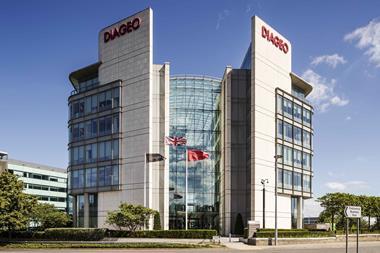
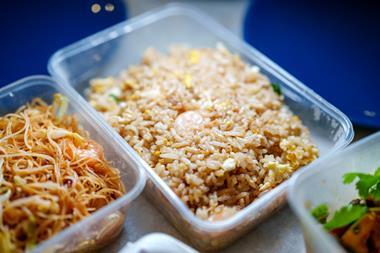
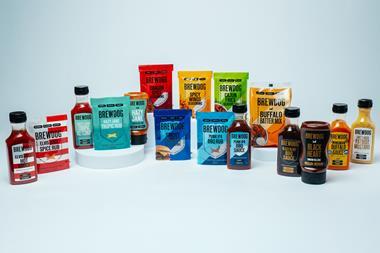

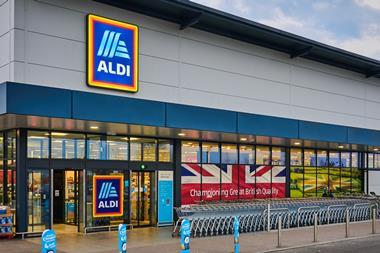
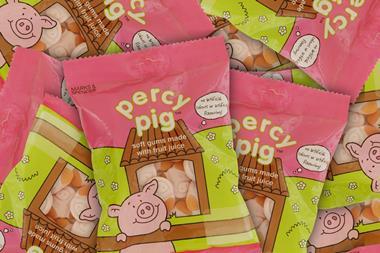

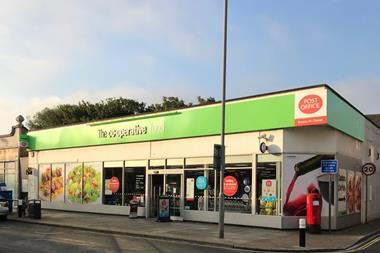
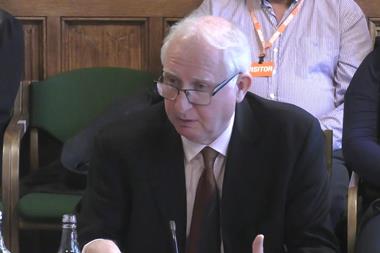
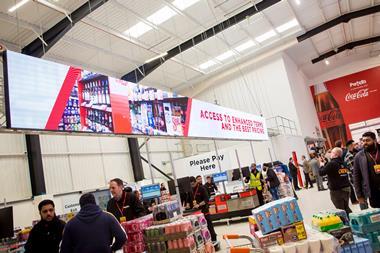

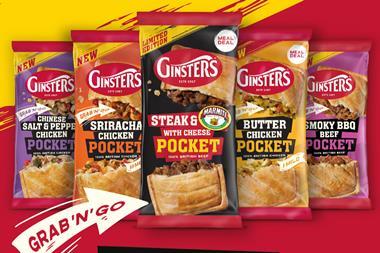
No comments yet